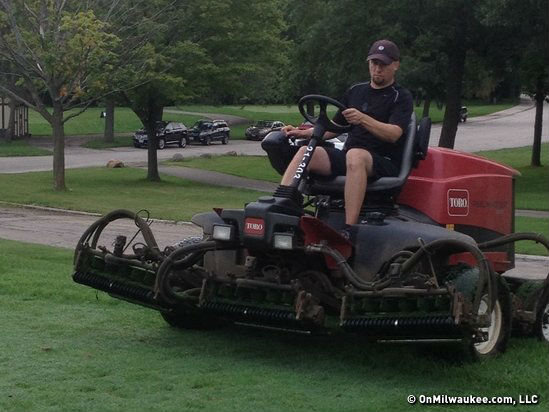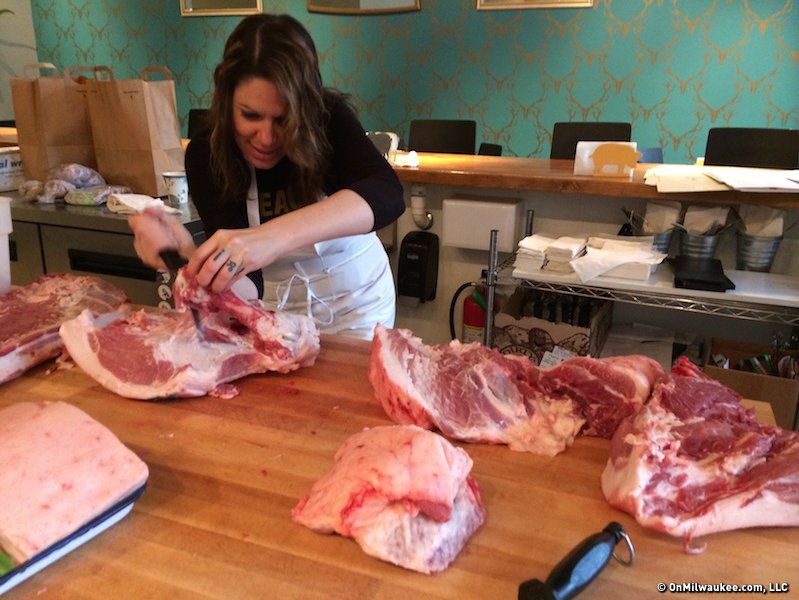For the 10th straight year, October is Dining Month on OnMilwaukee, presented by the restaurants of Potawatomi Hotel & Casino. All month, we're stuffed with restaurant reviews, dining guides, delectable features, chef profiles and unique articles on everything food, as well as voting for your "Best of Dining 2016."
Sure, everyone associates Wisconsin with cows and cheese and beer. But drive through the state and you’ll spy seemingly endless fields of corn swaying in the breeze, as well as acres and acres and acres of soybeans running through their array of lovely earth tones during the growing season.
And, if you visit at the right times of the year, you’ll also see the low, evergreen trailing vines of the cranberry fields in the central part of the state, where the slightly sunken beds are dotted with beautiful pink flowers early in season and flooded with water, painted red by floating cranberries, as harvest proceeds in September and October.
In fact, Wisconsin is the No. 1 producer of cranberries in the world, and the plant is native to the marshy areas of the state. Quebec, Canada, is second, having recently overtaken No. 3 Massachusetts.
Despite attempts to grow cranberries around the world, in Chile, Russia, Poland and Germany (as well as in the Pacific Northwest), the Badger State is still king of the cranberry.
Though sales of cranberries were recorded as early as the 1820s in Wisconsin, commercial production here appears to have begun later, by the 1860s, according to Jerry Apps' "Wisconsin Agriculture: A History."
What used to be a mainly domestic crop has been growing internationally, and now a third of American-grown cranberries is exported around the world. The tart and sweet red fruits are especially popular in Taiwan, China, Germany, England and Poland. Most of the berries are enjoyed as dried fruit and as juice.
I’ve always been curious about cranberry farming in the state – not to mention eager to slip into some waders and step down into the bogs. Recently, I finally got my chance, thanks to Nicole Hansen at Cranberry Creek Cranberries in Necedah, northwest of the Dells.
Hansen, who grew up on a dairy farm in Ontario, Wisconsin, about 75 minutes from the Cranberry Creek farm that she now calls home, was a biology major with a chemistry minor before she got her start working with a cranberry business consultant.
With her ag background and education – as well as her growing knowledge of cranberries – Hansen caught the attention of Cranberry Creek owner Bill Hatch.
"That first summer (consulting) Bill approached me," Hansen recalls, "and said, ‘We're looking for someone that'll come in and take care of the plants. Are you interested?’"

She’s been at the Creek for two decades now and knows the business of cranberry farming inside and out. Perhaps most important of all, she believes in her product.
"I love the health aspect of a cranberry," she says. "What I love about growing cranberries is the challenge. It's always a surprise because mother nature controls probably 98 percent of what is actually going to happen, and it's always changing. Every year is different, in that it's the challenge of trying to manage all the variables you can manage ... to come out with the best yields you can and to really have the best health for your plants."
In addition to being a grower-owner in the Ocean Spray co-op, Cranberry Creek – which is the largest contiguous cranberry grower in the area, meaning its beds are all together on adjacent land – also supplies berries to some independent brands.
Interestingly, each bed on the sprawling farm "belongs" to an end user, be it Ocean Spray or one of the indies.
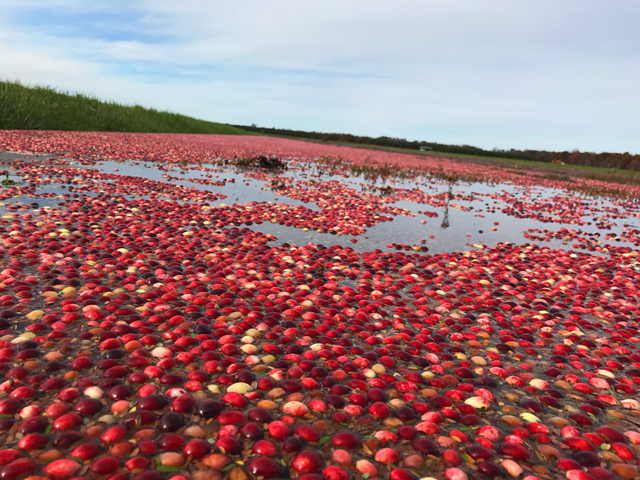
"They buy everything that grows there," Hansen explains. "Because they want you to treat that area under certain guidelines or boundaries that they set. So there are certain ways that they might want us to manage it or to handle the fruit coming off it. We do it based on what Ocean Spray and the independent buyers want."
That means that Hansen has to know which varieties of cranberries are growing in each bed, how to manage – to prune or not to prune, how much annual vine growth is desired, etc. – them, when to harvest and more.
After being devastated by a tornado in 2011, the Cranberry Creek facility was rebuilt, which means it’s modern and new. We chatted for a while there, before stepping into rubber hip boots and heading out to the fields.
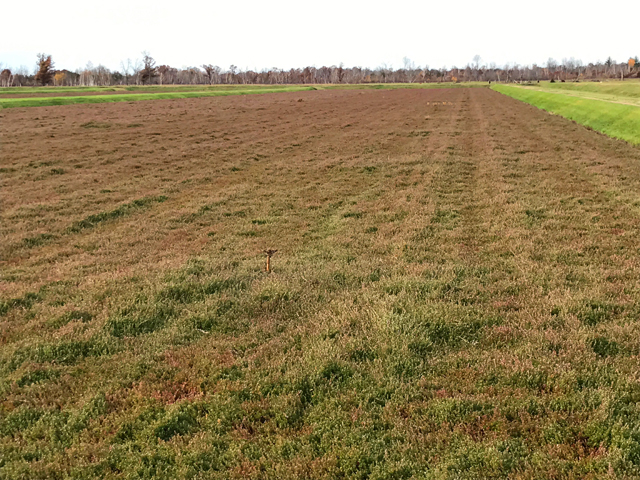
As we enter the area with the beds, interlaced by a series of access roads that create a giant grid of cranberry fields, Hansen points out which beds have already been harvested (there’s very little red to be seen), which have yet to be harvested (dotted with lots of red berries) and which are about to be harvested (the ones full of water).
She explains how the on-site reservoirs are used to irrigate the beds during the growing season, to flood them for harvest and to freeze them in winter. Yes, freeze them. Despite the fact that uncontrolled cold can be harmful, controlled ice can be key for cranberry farmers in Wisconsin.
"Once we get into December and we start getting frost in the ground, we have to make sure that we put a layer of water over the vines and encase the vines in ice," Hansen tells me.
"What you really want to do is create a block of ice about 12 inches where the vines are right in that 12 inches of ice. And then not have any water underneath it. You want to get rid of that water because you don't want to cause any disease or mold problems or, like, root rot."
The reservoirs, which are pumped on and gravity-fed off the beds, are extremely important for the farmers, pretty much all year long.
Once spring comes, Hansen has to be careful to manage plant growth. Much like a wine grape producer, she doesn’t want excessive growth. She wants the plant’s energy to go into making delicious berries rather than longer vines.
Shorter vines can mean smaller yields, so she has to carefully balance the factors to get not only a yield that works in terms of efficiencies and finances, but also a high-quality fruit.
"My philosophy is to manage the plant growth with nutrition (rather than pruning or fertilizer)," she says. "There are other variables such as weather that have an influence that can get you too much plant growth. Like this year was a rainy year, and so we have a lot of plant growth because of the rain.
"Cranberries are a great crop as far as sustainability and land stewardship and the environment because you really don't want to over-fertilize them. If you do, you cause all kinds of problems for yourself."
When the flowers begin to appear, Hansen brings in millions of trained bees that swarm around the beds, doing their duty as pollinators – her bee-keeper also drops off some honey as a little gift come autumn. Seeing the bees must be quite a spectacle, but, Hansen says, more interesting is the constant hum that pervades the area when the bees are buzzing about.
Beginning in September, the beds begin to be flooded for harvest, the dates of which are determined by a number of factors, including what the weather’s been like, the maturity of the fruit (as determined in large part by color) and the maturation of the varietal planted in each bed. Different breeds are harvested at different times.
Soon, we walk out into a bed that’s been flooding in preparation for harvest. I’m surprised to feel the springiness of the plants beneath my feet, and to see just how many spider webs have been constructed by arachnids in and around the beds.
I have to say there’s nothing quite like plucking a gorgeous red cranberry out of the bog and popping it in your mouth. I pick one up here and there to try, and each is a perfect balance of sweet and tart – the flavors no doubt enhanced by the experience of eating them out in the bed.
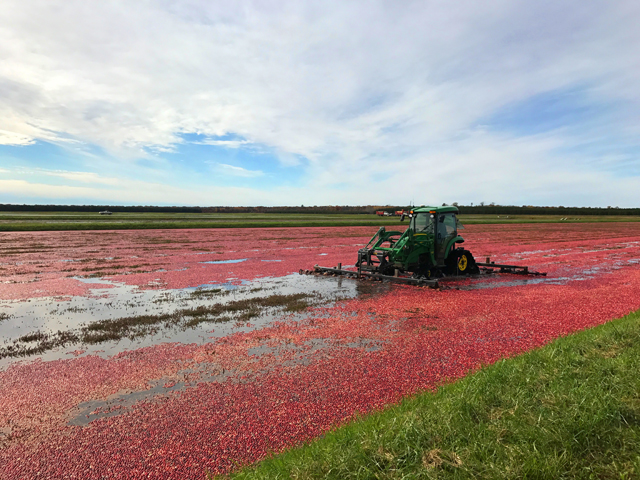
The day I visit, the teams at Cranberry Creek are collaborating to get as many as 10 beds in; specialized crews are at work.
One preps the fields for the harvest, running a harrow (pictured above) through the flooded bed to free the berries from the bushes, so they can float to the surface of the water. The so-called wet harvest dates back to the 1960s. Before that, it was a lot of back-breaking, bent-over labor picking the berries with hand implements (pictured below).

"It floats because the cranberry has four hollow air chambers inside of it," says Hansen. "So it just makes harvesting that much easier. The cranberry plant is a low-trailing evergreen vine, so it lays on the ground and it's a perennial so it's not like you can go through and just take the whole vine out. You can harvest the fruit off of it, but you need to use the vine, which has next year's crop on it."
Some workers drive a series of trucks that haul the harvest into the facility as the fruit comes out of the beds. Each bed can fill numerous trucks, so there’s a constant rumble of vehicles making the loop between the bogs and the facility buildings across the road.
After the harrowing is done, that crew moves on to another bog. The harvest crew pulls up and installs a long, yellow plastic boom that is stretched out and used to corral all the floating berries at one end of the bog. Today, it’s a windy day, so mother nature has helped out by, for the most part, blowing the berries to the east end of each bed.
Once the boom is in place and attached to a machine that will slowly reel it in tighter and tighter, a conveyor belt with sprayers is lowered into the bed. As the boom closes in, the berries are helped up onto the belt by the sprayers, which draw water from the bed. The berries go off to the right into the back of a truck and the water is diverted – through a trailer that filters out trash like leaves – and returned to the bog (sustainability!).

This is where I get to lend a hand. Hansen and I step into the bog, lift our boot-covered feet up over the boom and into the red sea of berries to help – with the use of a long-handled tool called a push board – direct the berries into the path of the spray and conveyor belt.
In the old days and at smaller operations, this job is an important one. At Cranberry Creek, the harvest has become so well-choreographed and automated that it’s generally an optional task for the crew, which instead uses this time to eat a little pizza next to the bog and keep an eye on the operation. So, though I get to work, it’s more photo op than anything else. Still, I’ll take it.

Harvest time is a sensitive, all-hands-on-deck, 'round-the-clock business. Hansen rarely sleeps well, because she has to monitor overnight temperatures and make sure nothing threatens her crop.
"You're protecting the fruit that's out there right now so that that doesn't freeze before you get it harvested," she says, explaining why the farm has so much worker housing on the property. There’s activity 24 hours a day.
Then, as soon as harvest is done, Hansen is already focused on next year.
"We're already watching next year's crop," she says, "because if the temperatures get cold right now, you're protecting the bud to make sure that it doesn't get damaged, because that has next year's crop in it. Once we make that 12 inches of ice, what we want to do is cultural practices to help with disease and insect pressure. In the winter we put a layer, about a quarter- to a half-inch layer of sand on the beds about every three years rotation. So we'll drive out on the beds with a dump truck and put that on the beds, right on top of the ice.
"Then in the spring when that ice melts, that settles down on the vines and it'll sift down through the top of the uprights and get down on top of the soil and you'll form new roots closer to where your terminal bud is that has your fruit. That also helps with insect and disease control."

Early spring is much like late autumn. That 12 inches of ice melts off, but still there’s the threat of frost, until about the end of April, when irrigation starts again. In this season, the wind becomes a potential threat, says Hansen.
"Wind can cause a lot of damage to the plants. Frost in the ground can cause a lot of damage to the plants, because what you'll see is you'll see the winter burn like you see on evergreen shrubs around here. You can have that happen on your cranberry plants and if that happens, you're in tough shape."
May brings insect, disease and weed control ... as the cycle begins anew.
In the meantime, this year’s berries are shipped to customers, where they become Craisins and cranberry juice and canned cranberry sauce and bags of fresh cranberries at the grocery store, bringing a taste of Wisconsin to the rest of the country – and now, more than ever, the rest of the world.
Born in Brooklyn, N.Y., where he lived until he was 17, Bobby received his BA-Mass Communications from UWM in 1989 and has lived in Walker's Point, Bay View, Enderis Park, South Milwaukee and on the East Side.
He has published three non-fiction books in Italy – including one about an event in Milwaukee history, which was published in the U.S. in autumn 2010. Four more books, all about Milwaukee, have been published by The History Press.
With his most recent band, The Yell Leaders, Bobby released four LPs and had a songs featured in episodes of TV's "Party of Five" and "Dawson's Creek," and films in Japan, South America and the U.S. The Yell Leaders were named the best unsigned band in their region by VH-1 as part of its Rock Across America 1998 Tour. Most recently, the band contributed tracks to a UK vinyl/CD tribute to the Redskins and collaborated on a track with Italian novelist Enrico Remmert.
He's produced three installments of the "OMCD" series of local music compilations for OnMilwaukee.com and in 2007 produced a CD of Italian music and poetry.
In 2005, he was awarded the City of Asti's (Italy) Journalism Prize for his work focusing on that area. He has also won awards from the Milwaukee Press Club.
He has be heard on 88Nine Radio Milwaukee talking about his "Urban Spelunking" series of stories, in that station's most popular podcast.




